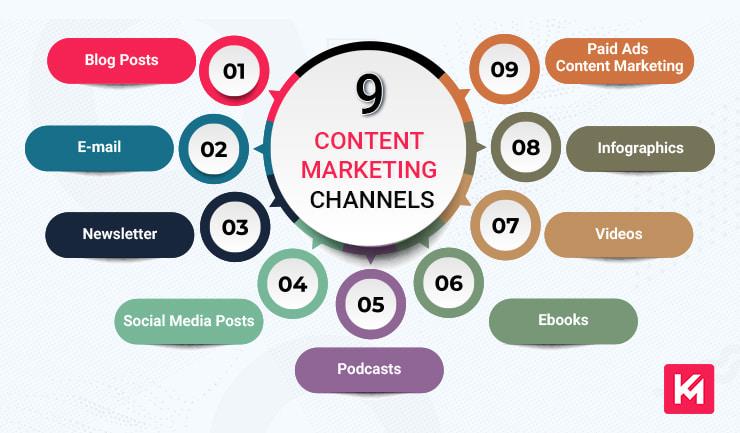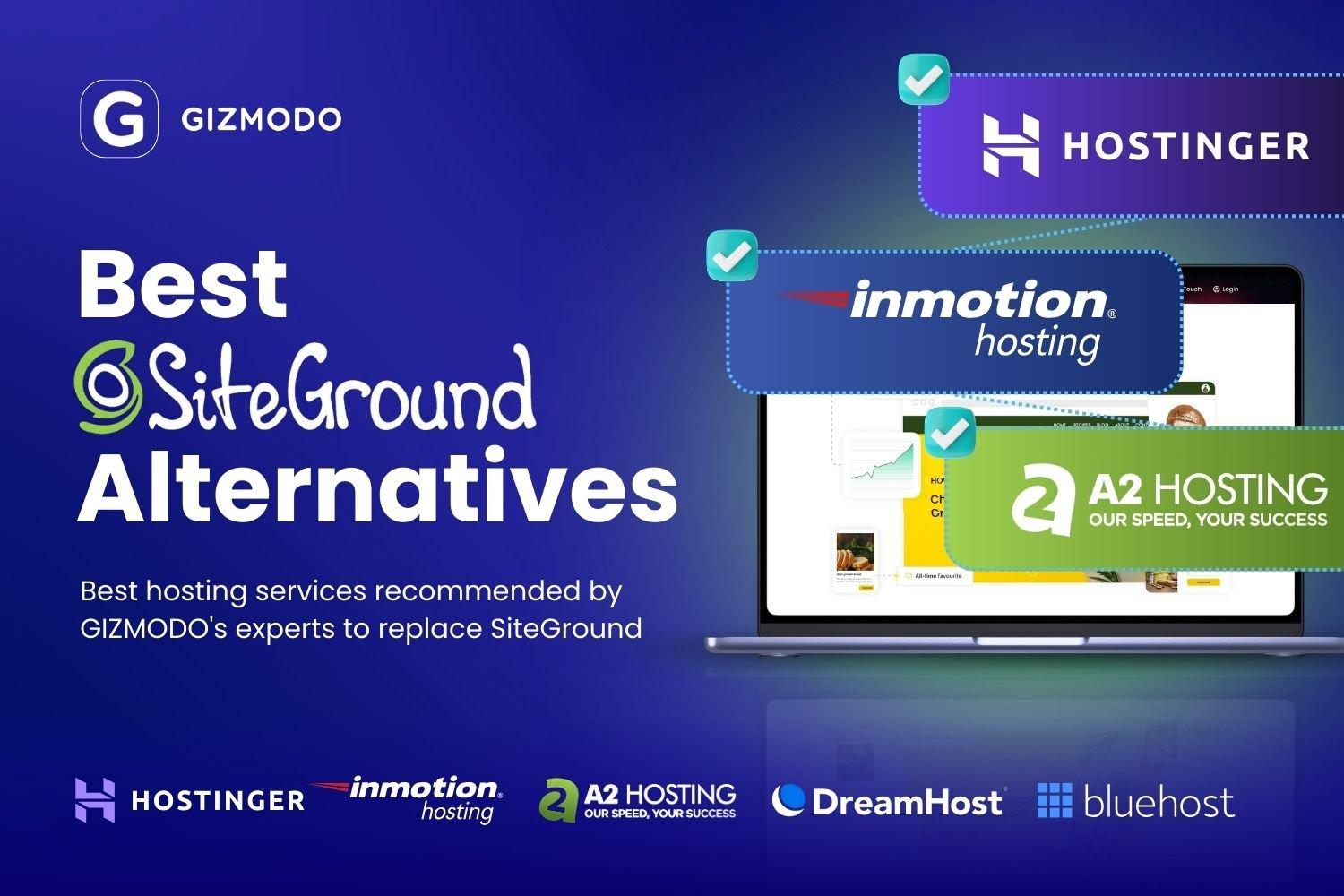Introduction: The Role of Content Marketing in B2B SEO
In today’s digital landscape, where competition is just a click away, the importance of standing out cannot be overstated—especially for B2B businesses. Have you ever wondered why some brands seem to effortlessly dominate search engine results while others struggle to be seen? The secret often lies in the powerful synergy between content marketing and SEO. Imagine your business not only ranking higher in search results but also engaging your audience with compelling content that builds trust and drives conversions. Sounds ideal, right? In this article, we’ll explore how a strategic approach to content marketing can elevate your B2B SEO efforts, transforming your brand into a thought leader in your industry and attracting the right clients. Let’s dive in and uncover the strategies that can take your online presence to the next level!
The Power of Content Marketing in Elevating B2B SEO Strategies
In the ever-evolving landscape of B2B marketing, content marketing stands out as a vital force behind effective SEO strategies. By prioritizing high-quality content that resonates with your target audience, businesses can enhance their online visibility and drive organic traffic. This isn’t just about keywords; it’s about crafting compelling narratives that engage and inform potential clients at every stage of their journey.
The foundation of a robust SEO strategy lies in relevant content. To achieve this, consider the following approaches:
- Keyword Research: Identify the terms and phrases your audience is searching for.
- Audience Personas: Develop content tailored to the needs and pain points of different buyer personas.
- Value-Driven Content: Focus on delivering actionable insights, case studies, and industry trends that provide real value.
Additionally, the interplay between SEO and content marketing is evident in the way search engines prioritize fresh, relevant content. Regularly updating your blog with articles that tap into the latest industry developments not only keeps your audience informed but also boosts your site’s authority. When search engines recognize your site as a reliable source of information, your rankings improve, leading to increased visibility.
Incorporating various content formats can also elevate your B2B SEO strategy:
- Blog Posts: Deep dives into specific topics.
- Infographics: Visual representations of data that enhance shareability.
- Whitepapers and E-books: In-depth resources that establish thought leadership.
To illustrate the effectiveness of content marketing in enhancing SEO, consider the following table:
| Content Type | SEO Benefit |
|---|---|
| Blog Posts | Increases keyword density and fresh content updates. |
| Case Studies | Builds trust and authority in the industry. |
| Videos | Enhances user engagement and time spent on site. |
Ultimately, content marketing is not just an adjunct to SEO; it’s a powerful driver of search engine success. By integrating thoughtful, targeted content into your SEO strategy, you not only improve your rankings but also foster deeper connections with your audience, paving the way for sustained growth in the competitive B2B space.
Understanding Your Audience: Crafting Content That Resonates
Understanding your audience is the cornerstone of effective content marketing, particularly in the B2B sector. Your potential clients are often inundated with information, making it crucial for your content to stand out by addressing their specific needs and pain points. By crafting content that resonates, you not only grab their attention but also build trust, laying the groundwork for a fruitful relationship.
To truly engage your audience, you should first identify their preferences, challenges, and interests. Consider the following strategies:
- Conduct Surveys: Direct feedback can provide invaluable insights into what your audience finds valuable.
- Analyze Competitor Content: Understanding what works for your competitors can guide your own strategy.
- Create Buyer Personas: Develop detailed profiles of your ideal customers to tailor your messaging appropriately.
Once you have a grasp on your audience’s characteristics, it’s time to refine your content strategy. This involves creating various content types that appeal to different segments of your audience. Think about incorporating:
- Blog Posts: Offer in-depth knowledge and insights relevant to your industry.
- Case Studies: Showcase real-world applications of your solutions to demonstrate effectiveness.
- White Papers: Provide comprehensive research that positions your brand as a thought leader.
Moreover, utilizing data-driven approaches can significantly enhance your content’s effectiveness. By monitoring engagement metrics, you can adjust your content strategies to better serve your audience’s evolving needs. Consider creating a simple table to track key performance indicators:
| Content Type | Engagement Rate | Leads Generated |
|---|---|---|
| Blog Posts | 3.5% | 150 |
| Case Studies | 5.2% | 200 |
| White Papers | 7.8% | 300 |
By aligning your content with your audience’s expectations and continually refining your approach based on real data, you can create a compelling narrative that not only attracts attention but also drives conversions. Remember, effective content marketing in a B2B context isn’t just about presenting information; it’s about crafting experiences that resonate deeply with your audience.
The Importance of Keyword Research in Content Creation
Keyword research is the backbone of effective content creation, serving as a roadmap that guides marketers through the intricate landscape of search engine optimization. By identifying the terms and phrases that potential customers are actively searching for, content creators can tailor their messages to resonate with the audience’s needs and interests. This alignment not only enhances visibility but also fosters a deeper connection with the target market.
When embarking on keyword research, consider these key factors:
- Search Volume: Gauge how often specific keywords are being searched. Higher volumes indicate greater interest, but it’s crucial to balance this with competition levels.
- Relevance: Ensure that the keywords closely relate to your content and the overall goals of your marketing strategy. Irrelevant keywords can lead to high bounce rates.
- Competition: Analyze how many other businesses are targeting the same keywords. Finding a balance between high search volume and manageable competition is key.
Utilizing tools like Google Keyword Planner or SEMrush can provide invaluable insights into these factors. Once you’ve identified your target keywords, the next step is to seamlessly integrate them into your content. This includes not only the body text but also titles, meta descriptions, and even image alt tags. Natural integration is vital—overstuffing your content with keywords can harm readability and negatively impact search rankings.
Moreover, keeping an eye on trending keywords is essential in the ever-evolving landscape of SEO. Consumer interests shift over time, and what worked last year may not be effective today. Regularly updating your keyword strategy allows you to stay relevant and capture emerging opportunities. Consider creating a simple table to track your keyword performance:
| Keyword | Search Volume | Competition Level | Notes |
|---|---|---|---|
| Content Marketing Strategies | 1,500 | Medium | Consider blog posts and case studies. |
| B2B SEO Techniques | 900 | High | Focus on niche aspects of B2B. |
| Keyword Research Tools | 1,200 | Low | Highlight various tools available. |
In essence, keyword research does not merely inform your content strategy; it empowers your entire marketing approach. By grounding your content in data-driven insights, you can create valuable resources that engage your audience, drive traffic, and ultimately enhance your brand’s authority in the B2B space. This foundational step is critical for ensuring that your content marketing efforts are not just seen, but truly resonate with those you aim to serve.
Creating Value-Driven Content That Attracts and Retains Leads
In the competitive landscape of B2B marketing, creating content that resonates with your target audience is paramount. Value-driven content not only attracts potential leads but also fosters long-term relationships that contribute to sustained business growth. To achieve this, focus on delivering relevant information that addresses the needs and pain points of your audience.
To effectively engage your audience, consider the following approaches:
- In-depth Guides: Create comprehensive resources that educate your audience about industry-specific challenges and solutions they might face.
- Case Studies: Showcase real-world applications of your products or services to demonstrate their effectiveness and build trust.
- Webinars and Workshops: Host interactive sessions where potential leads can learn and engage directly with your experts, enhancing their experience and knowledge.
Additionally, leveraging SEO best practices is crucial in ensuring your content reaches a wider audience. By incorporating targeted keywords and optimizing meta descriptions, your content can rank higher in search engine results, making it easier for potential leads to discover you. Remember, each piece of content should not only be valuable but also crafted with search intent in mind.
To illustrate the impact of value-driven content, consider the following table that outlines essential metrics:
| Content Type | Impact on Leads |
|---|---|
| Blog Posts | Increase organic traffic by 60% |
| Whitepapers | Generate 80% more leads |
| Videos | Boost engagement rates by 50% |
Ultimately, the goal is to position your brand as a thought leader in your industry. By consistently delivering high-quality, value-driven content, you not only attract leads but also empower them to make informed decisions. This relationship builds loyalty and encourages leads to return, turning them into long-term clients who trust your expertise.

Leveraging Different Content Formats for Maximum Impact
In today’s fast-paced digital landscape, engaging your audience requires more than just well-written articles. By utilizing a variety of content formats, B2B marketers can create a multi-dimensional experience that resonates with different segments of their target audience. Here are some effective formats to consider:
- Infographics: These visually appealing graphics can simplify complex data and make it digestible. Infographics are shareable and can significantly increase traffic when shared on social media.
- Videos: Short, engaging videos can convey your message quickly. Whether it’s a product demo, a customer testimonial, or an industry insight, video content is more likely to grab attention.
- Podcasts: This growing medium allows for deep dives into topics and provides a platform for discussions that can educate and entertain. They’re perfect for busy professionals who prefer to consume content on the go.
- Webinars: Hosting live sessions can foster direct engagement with your audience. It allows for real-time questions and discussions, enhancing user experience and building trust.
Each of these formats serves a unique purpose and can be strategized according to your specific marketing goals. For instance, if your aim is to generate leads, consider creating gated content like downloadable ebooks or whitepapers. These not only provide value but also allow you to capture vital contact information.
To effectively measure the success of these formats, it’s essential to track metrics such as engagement rates, shares, and conversions. Here’s a simple table that outlines some key performance indicators (KPIs) for different content types:
| Content Format | Key Performance Indicators |
|---|---|
| Blog Posts | Page Views, Time on Page, Bounce Rate |
| Infographics | Shares, Backlinks, Engagement Rate |
| Videos | Views, Click-Through Rate, Engagement |
| Podcasts | Downloads, Listener Retention, Reviews |
| Webinars | Attendee Rate, Follow-Up Engagement, Lead Conversion |
By diversifying your content offerings and continually analyzing their performance, you can create a holistic content marketing strategy that not only boosts your SEO but also enhances your brand authority in the B2B space. Remember, the key is to tailor each format to meet the needs and preferences of your audience.

Building Trust Through Thought Leadership Content
In the competitive landscape of B2B marketing, establishing authority is essential for building trust. Thought leadership content serves as a powerful vehicle to showcase expertise, demonstrate industry knowledge, and share innovative insights. When businesses create and disseminate valuable content, they position themselves as leaders in their field, which can foster greater credibility among potential clients.
To effectively leverage thought leadership in your content marketing strategy, consider the following strategies:
- Focus on Value: Always prioritize the needs of your audience. Provide insights, solutions, and information that can help them navigate their challenges.
- Engage with Current Trends: Stay updated with industry trends and incorporate these insights into your content. This not only showcases your knowledge but also aligns your brand with relevant discussions.
- Use Data-Driven Insights: Support your claims with data and research. Infographics, case studies, and statistics can enhance your credibility and present a strong case for your expertise.
Consistency is key in building trust through thought leadership. Regularly publishing high-quality content enables your brand to stay top-of-mind with your audience. This consistent engagement fosters familiarity, which translates to trust over time. It’s crucial to maintain a consistent voice and style across your content channels, reinforcing your brand identity.
Furthermore, consider collaborating with other thought leaders or industry influencers. Guest articles, joint webinars, or co-hosted events can expand your reach and introduce your brand to new audiences. Such partnerships not only enhance your credibility but also showcase your willingness to engage with other experts, further cementing your position as a trusted resource.
Ultimately, effective thought leadership content can drive organic traffic and improve SEO performance. By addressing the pain points of your audience and positioning your brand as a solution, you not only attract potential clients but also foster long-term relationships built on trust and authority.

Optimizing Content for Better Search Visibility
To climb the ranks of search engine results, it’s essential to prioritize content optimization. B2B companies can unlock the true potential of their content marketing strategies by tailoring their materials for both users and search engines. This means creating high-quality, relevant content that resonates with your target audience while also adhering to SEO best practices.
Here are several strategies to enhance your content for search visibility:
- Keyword Research: Begin with thorough keyword research to identify the terms and phrases your audience is searching for. Utilize tools like Google Keyword Planner or SEMrush to discover high-volume keywords that align with your offerings.
- On-Page SEO: Optimize your content by incorporating keywords naturally into your titles, headings, and body text. Don’t forget to add meta descriptions and alt text for images to improve visibility.
- Engaging Formats: Diversify your content formats to keep users engaged. Consider using blogs, infographics, videos, and whitepapers. Varied formats not only cater to different learning styles but also enhance user experience, leading to longer page visits.
- Internal and External Linking: Strengthen your content by linking to credible external sources and relevant internal pages. This not only boosts SEO but also provides additional value to your readers.
Another crucial aspect is to ensure your content is user-friendly and accessible. This includes:
- Mobile Optimization: With an increasing number of users accessing content on mobile devices, ensure your site is responsive and loads quickly.
- Readability: Use short sentences, bullet points, and subheadings to break up text and enhance readability. A clean layout improves user engagement and reduces bounce rates.
- Call-to-Action (CTA): Always include clear CTAs in your content. This not only guides users on what to do next but also helps convert them into leads.
regularly assess and update your content. Analyzing performance metrics, such as organic traffic and user engagement, can offer insights into what’s working and what needs improvement. Use a simple table to track these metrics over time:
| Month | Organic Traffic | Average Time on Page | Bounce Rate |
|---|---|---|---|
| January | 1,500 | 2:45 mins | 45% |
| February | 1,750 | 3:10 mins | 40% |
| March | 2,000 | 3:30 mins | 35% |
By implementing these strategies, B2B companies can elevate their content marketing efforts and achieve greater search visibility, ultimately driving more qualified leads to their business.

Using Analytics to Fine-Tune Your Content Marketing Efforts
In today’s digital landscape, analytics has become the secret weapon for businesses looking to hone their content marketing strategies. By leveraging data, you can uncover insights that not only enhance your content but also align it closely with your audience’s needs. Here are some pivotal ways to utilize analytics effectively:
- Understand Audience Behavior: Analytics tools can reveal which content resonates most with your audience, helping you determine topics, formats, and channels that drive engagement.
- Measure Engagement Metrics: Dive into metrics like time on page, bounce rate, and social shares to quantify how well your content is performing. These figures can guide adjustments to improve retention and interaction.
- Identify High-Performing Content: Use analytics to highlight your best-performing pieces. This allows you to replicate success by creating similar content or updating existing articles that are underperforming.
- Track Conversion Rates: Ultimately, the goal of content marketing is to drive conversions. Monitoring how well your content converts visitors into leads can inform future strategies and help optimize your sales funnel.
Furthermore, segmenting your audience within your analytics platform can lead to more personalized content creation. By understanding the demographics and preferences of different segments, you can tailor your messaging, ensuring it resonates on a deeper level. This personalized approach can significantly increase both engagement and conversions.
Additionally, A/B testing different content variations can provide concrete evidence of what works best. Whether it’s headlines, calls-to-action, or visuals, testing and iterating based on real data ensures that your content evolves with your audience’s preferences.
| Content Type | Engagement Metric | Actionable Insight |
|---|---|---|
| Blog Posts | Comments and Shares | Focus on trending topics and encourage discussion. |
| Infographics | Social Media Shares | Promote across platforms to maximize visibility. |
| Case Studies | Lead Conversions | Highlight successful outcomes to attract new clients. |
By integrating these analytical insights into your content marketing strategy, you’re not just throwing darts in the dark; you’re making informed decisions that can lead to significantly better results. Remember, the ultimate goal is to create valuable content that not only attracts but also retains your audience’s interest. The power of analytics lies in its ability to transform your content from good to outstanding, ensuring you stay ahead in the competitive B2B landscape.

Integrating Social Media for Enhanced Content Reach
In today’s digital landscape, the power of social media cannot be underestimated, especially when it comes to amplifying the reach of your content marketing efforts. By strategically integrating social media channels into your B2B SEO strategy, you can create a ripple effect that enhances visibility and engagement. Here’s how to harness the potential of social platforms to extend your content’s reach:
- Share Valuable Insights: Use social media to distribute key takeaways from your content. Sharing snippets or quotes can spark interest and lead potential clients back to your website.
- Engage with Your Audience: Encourage conversations around your content. Responding to comments and questions not only builds community but also boosts your content’s visibility in social feeds.
- Leverage Influencer Partnerships: Collaborating with industry influencers can significantly widen your audience. Their endorsement of your content can lend credibility and attract new followers.
Another effective method is to create a content calendar that aligns your posts across various social media platforms. This ensures consistent messaging while allowing for tailored content that resonates with each channel’s audience. Consider using diverse formats such as:
- Infographics: Visual representations of data can capture attention and are highly shareable.
- Videos: Short, engaging videos can drive higher engagement and share rates than static content.
- Webinars: Live events encourage real-time interaction and can be recorded and shared later for ongoing exposure.
To effectively track the impact of your social media efforts on content reach, it’s useful to set up a simple reporting framework. Below is a sample table that outlines key metrics to monitor:
| Metric | Goal | Current Status |
|---|---|---|
| Engagement Rate | 5% | 3.2% |
| Click-Through Rate (CTR) | 4% | 2.5% |
| Follower Growth | 10% monthly | 7% monthly |
By continually refining your social media strategy based on these metrics, you can adapt and optimize your approach, ensuring your content reaches the right audience. Remember, effective integration of social media not only amplifies your content but also drives meaningful connections that can lead to conversions and long-lasting business relationships.

Future Trends: Adapting Your Content Strategy for SEO Success
As the digital landscape continues to evolve, B2B companies must stay ahead of the curve to maintain their competitive edge. Adapting your content strategy in alignment with emerging SEO trends is crucial for driving organic traffic and engagement. Here are some key areas to focus on:
- Voice Search Optimization: With the rise of smart speakers and voice assistants, optimizing your content for voice search is essential. This includes using conversational language and long-tail keywords that reflect natural speech patterns.
- AI-Driven Content Creation: Artificial intelligence tools are transforming content marketing. By leveraging AI for data analysis, businesses can create personalized content that resonates with their audience while improving efficiency.
- Video Content Integration: Video continues to dominate user engagement. Incorporating video into your content strategy not only enhances user experience but also improves your SEO ranking, as search engines favor multimedia-rich content.
Another pivotal trend is the emphasis on user experience (UX). Search engines are increasingly prioritizing websites that provide a seamless and engaging UX. This means your content should be:
- Visually appealing, with proper use of images and videos
- Mobile-friendly, ensuring accessibility across devices
- Easily navigable, allowing users to find information effortlessly
Consider implementing structured data markup to help search engines better understand your content. This can lead to enhanced search results, such as rich snippets, which improve visibility and click-through rates. Here’s a simple table summarizing the benefits of structured data:
| Benefit | Description |
|---|---|
| Improved Visibility | Enhances search result appearance with rich snippets. |
| Increased CTR | Higher click-through rates due to more engaging results. |
| Better Indexing | Helps search engines understand content context. |
Lastly, don’t underestimate the importance of analytics. Use data-driven insights to refine your content strategy continuously. Monitoring user engagement metrics will allow you to identify what works and pivot your approach to maximize effectiveness.
Frequently Asked Questions (FAQ)
Q&A: The Role of Content Marketing in B2B SEO
Q1: Why is content marketing important for B2B companies looking to improve their SEO?
A1: Great question! In the B2B landscape, decision-makers seek valuable, informative content that addresses their specific pain points. Content marketing creates that valuable resource, establishing your brand as an authority and driving organic traffic to your site. By optimizing this content for search engines, you not only increase visibility but also attract qualified leads who are more likely to convert.
Q2: How does content marketing impact keyword strategy in B2B SEO?
A2: Content marketing plays a crucial role in keyword strategy. When you create high-quality content, you have the opportunity to naturally incorporate relevant keywords that your target audience is searching for. By addressing these keywords through blog posts, whitepapers, and case studies, you enhance your chances of ranking higher in search results. It’s all about aligning your content with what your potential customers are already looking for.
Q3: Can you explain how content marketing builds trust and credibility in B2B SEO?
A3: Absolutely! Trust and credibility are vital in B2B relationships. High-quality content that educates, informs, and solves problems showcases your expertise and builds trust with your audience. When potential customers consistently find valuable insights on your site, they are more likely to view your brand as a reliable partner. This trust translates into higher engagement rates, more backlinks, and ultimately, improved SEO performance.
Q4: What types of content should B2B companies focus on for effective SEO?
A4: B2B companies should focus on a variety of content types to capture different stages of the buyer’s journey. Blog posts and articles are great for attracting organic traffic, while whitepapers, eBooks, and case studies can nurture leads by providing in-depth knowledge. Webinars and videos can also engage audiences effectively. The key is to create a diverse content mix that not only engages but also educates your audience.
Q5: How often should B2B companies create new content for SEO purposes?
A5: Consistency is key! While there’s no one-size-fits-all answer, aim to publish new content regularly—whether that’s weekly or bi-weekly. Regular updates signal to search engines that your website is active and relevant, which can boost your rankings. Plus, frequent content creation keeps your audience engaged and coming back for more.
Q6: What are some common mistakes to avoid in B2B content marketing for SEO?
A6: One common mistake is focusing solely on sales pitches rather than providing value. Remember, the goal is to educate, not just sell. Another pitfall is neglecting keyword research, which can lead to missed opportunities for visibility. Lastly, avoid creating content that lacks depth; aim for well-researched, comprehensive pieces that truly resonate with your audience.
Q7: How can B2B companies measure the success of their content marketing efforts in relation to SEO?
A7: There are several key metrics to track! Look at organic traffic to see how many visitors are coming from search engines. Monitor keyword rankings to evaluate how well your content is performing. Engagement metrics, such as time on page and bounce rate, can provide insights into content quality. track conversions and leads generated from your content to assess overall effectiveness.
Conclusion:
Incorporating a robust content marketing strategy into your B2B SEO efforts isn’t just beneficial—it’s essential. By creating valuable, optimized content, you can establish your brand as a trusted authority, attract the right audience, and ultimately drive growth. So, if you haven’t yet embraced content marketing, now’s the time to start!
Key Takeaways
As we wrap up our exploration of the pivotal role that content marketing plays in B2B SEO, it’s clear that the synergy between these two elements is not just a trend—it’s an essential strategy for success in today’s digital landscape. By crafting high-quality, relevant content, you’re not only boosting your search engine rankings but also building trust and authority within your industry.
Remember, in the world of B2B, your audience is not just seeking products or services; they’re looking for solutions and insights that can drive their business forward. Content marketing gives you the platform to fulfill that need while enhancing your visibility in search results.
So, as you strategize your next steps, consider how you can leverage compelling content to not only climb those SEO rankings but to engage, inform, and convert your audience. The investment in quality content is an investment in your brand’s future, and the dividends can be significant.
Let’s face it: in a marketplace saturated with options, it’s the value you provide through your content that will set you apart. Embrace the power of content marketing in your B2B SEO efforts, and watch your business thrive. Now, go ahead—create, connect, and conquer the digital space!


